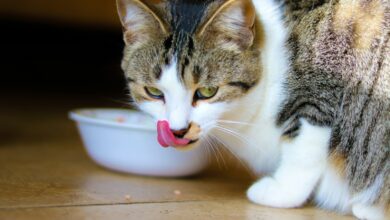
I still have not forgotten the day I brought Max, my golden retriever pup, home. It was a cool morning, dew on the grass. And the house smelled faintly of warm toast. The first week, though, was rough. His stomach rumbled, and Male scratched much, but Male did not have neat stools, and that made me worry. But the one when a friend whispered the words “try seed-free puppy food” tells the truth. I didn’t know much back then, but after long talks with my vet and many bags of kibble checked, I can now share the real seed-free puppy food benefits I’ve seen in 2025.
Why do part puppies do better without grains?
The first question I asked my vet was easy: “Why seed-free?” Male said why in plain words—part puppies’ stomachs don’t work well with corn, grain, or soy. They can get bloated, itchy, or just weak.
Max was one of them, but every time he ate seed-heavy food, the noises from his stomach were like a small drum. But once I changed, the male quieted down. His fur feltshinier after two weeks.
Not every pup needs seed-free, but for the ones who do, it feels like night and day. Also, in 2025, vets speak more; owners are seeing her faster, thanks to better awareness and better formulas on the market.
What seed-free puppy food is made of
When you pick up a bag, the one that says “seed free,” the back label tells the truth. Instead of grain or corn, you’ll see things like sweet potato, lentils, chickpeas, or peas. And the first thing should be real meat every time.
I once stood in the pet store walkway, bag in hand. A man next to me muttered, “When the first word isn’t ‘farm,’ ‘bird,’ or ‘salmon.’ I don’t buy things.” Male had a point. Puppies need protein as their main fuel.
Seed-free doesn’t mean hollow. The thing still has carbs, but softer ones. And the ones why the benefits show up—fewer tummy troubles, more steady power, less scratching.
The usual health signs are the ones that show seed issues.
Max gave me all the signs; I just didn’t read them at first. Puppies don’t talk, but they do show:
- Loose stool or smelly messes in the yard
- Scratching ears or skin a lot of times
- Licking paws all the time
- Constant gas and bloating
- Low power after meals
One night, Male spoke of no food at all and sat near the window while rain hit the glass. And saw in me, like, a failed male. One night, I promised I’d learn better,and sure enough, changing showed me why some puppies really do need seed-free food.
Main seed-free puppy food benefits I saw
When I had to sum things up from what happened:
- Better digestion, no more not neat stool
- Shinier, softer coat
- Less itching and paw licking
- More power for play
- Cleaner smell (Yes, flat farts reduced!)
I asked my vet when she was normal. Also, the male spoke, “Yes, when the stomach works right, everything else improves.” And Male was right.
Seed-free and allergies in puppies
In 2025, allergy checking for dogs is more usual, but vets now use small blood tests to see what triggers reactions. Many times, grains are on the list.
My neighbor’s husky puppy had red patches on the stomach for months. After checking, the vet spoke of grain allergy. They changed to seed-free salmon built on food. And within weeks the red patches got weak.
Not all allergies are seed related, but seed-free is a lot of times the first check step vets suggest. Pups show skin or stomach troubles.
Table of trusted options in 2025
Here’s a small list I made while searching and checking.
| Name | Main Protein | WhyPuppies Like Thing | Vet what you think |
|---|---|---|---|
| Blue Buffalo Wilderness Puppy | Farm bird | High protein, soft coat | Same and safe |
| Merrick Seed Free Puppy | Beef | Strong power, tasty | Good thick same |
| WellnessCore Puppy | Turkey | Easy to digest | Vet-approved recipe |
| Orijen Puppy Seed Free | Many meats | Rich in protein | Best for moving breeds |
| Taste of the Wild Puppy | Salmon | Good for skin, coat | Nice digestion |
I tried Blue Buffalo and Taste of the Wild for Max. Also, two did job well, but salmon became his most liked why of the smell.
Do all puppies need seed-free food?
No, not really. The ones my vet held reminded me. Part puppies do well with grains, especially grain or oats. Max didn’t, but my friend’s Labrador puppy eats grain built on kibble daily and is perfectly well.
The point is, seed-free is an answer, not a rule. You try things when you see signs, but when there are no issues, the same normal food works good too.
Seed-free food and puppy growth
One thing I worried about was whether seed-free might stunt growth. Puppies grow fast; bones and muscles need strong fuel. My vet quieted me down, saying as long as protein, calcium. And DHA (for brain growth) is in the recipe; things are safe.
And in 2025, most seed-free puppy foods are made with growth needs in mind. Max grew into a strong, tall dog, and his vet checkup was clean.
The smell and taste part
Dogs don’t care about “seed free” as a label. Also, they care about smell; I will not forget cooking eggs in the kitchen one morning, and Max barked at the pan just because of the smell.
Seed-free foods a lot of times smell meatier, stronger, and newer. Max loved the salmon one so much he drooled before I filled the bowl. Also, taste makes the transition easy.
Mistakes I made while changing
I changed too fast at first. I poured the new kibble and took away the old one. Also, the result: diarrhea. The vet laughed softly and spoke, “Slow, every time slow.”
Mixing is the fool. A little new with the old, making more daily. Also, in a week or two, the stomach adjusts, but when I had known the one, I’d held Max, had a rough night, and had a not-neat backyard.
Price and budget thoughts
Let’s be honest, seed-free food costs more. Part bags are almost twice. I had to plan better, but I saw one thing—fewer vet visits for stomach issues meant keeping payment in the long run.
Also, I buy mid-size bags first. When Max doesn’t like a thing, I don’t waste a huge one. The one fool held me plenty.
Final tips I want to share
- Every time hold liquid new, why seed-free kibble can be thick.
- Store food with no air in; smell matters.
- Don’t feed just treats when trying new food; this confuses results.
- Check stool mostly; this thing tells you the truth about digestion.
FAQ
Q: Can small-type puppies eat seed-free food?
Yes, just choose small-bite kibble so they can bite easily.
Q: Is seed-free food safer than normal food?
Not every time safer, just better for sensitive or allergic puppies.
Q: How long till I see changes?
For Max, within one week. Part puppies might get two to three.
Final thought
Changing to seed-free puppy food taught me staying. The quiet sound of kibble pouring in the bowl, the way Max’s tail thumps on the floor, the cleaner yard after… all those little things showed me the benefits.
Thing’s not around going after a trend. Also, there are things around watching your pup, seeing the signs, and choosing what works. Seed-free puppy Food benefits are real—but just when your pup is the one who needs things.
So when your little one scratches too much, when the stool isn’t right. Also, or when a male just looks like he needs rest. Meals—maybe give seed-free a try. Like me, you could be surprised at how much difference a thing makes.





